The Future of Conversational Commerce Ads

What’s Next for Conversational Commerce Ads – and Why it’s Worth Your Attention
For centuries, businesses have leveraged the power of conversations to build trust and grow sales. For example, the most successful door-to-door salespeople became proficient at making quick connections with prospects – and then closing the deal. And the best in-store sales associates have always been those who are skilled at building rapport and adding value.
Today, great conversations continue to empower consumers to make informed purchase decisions. And, they help brands build trust and increase conversion. While conversations matter across a wide variety of industries, a recent survey found that conversations are especially valued when shopping in certain industries, including electronics, automotive, home & garden, travel & hospitality, and sporting goods.
Top Categories for Which Consumers Value Conversations
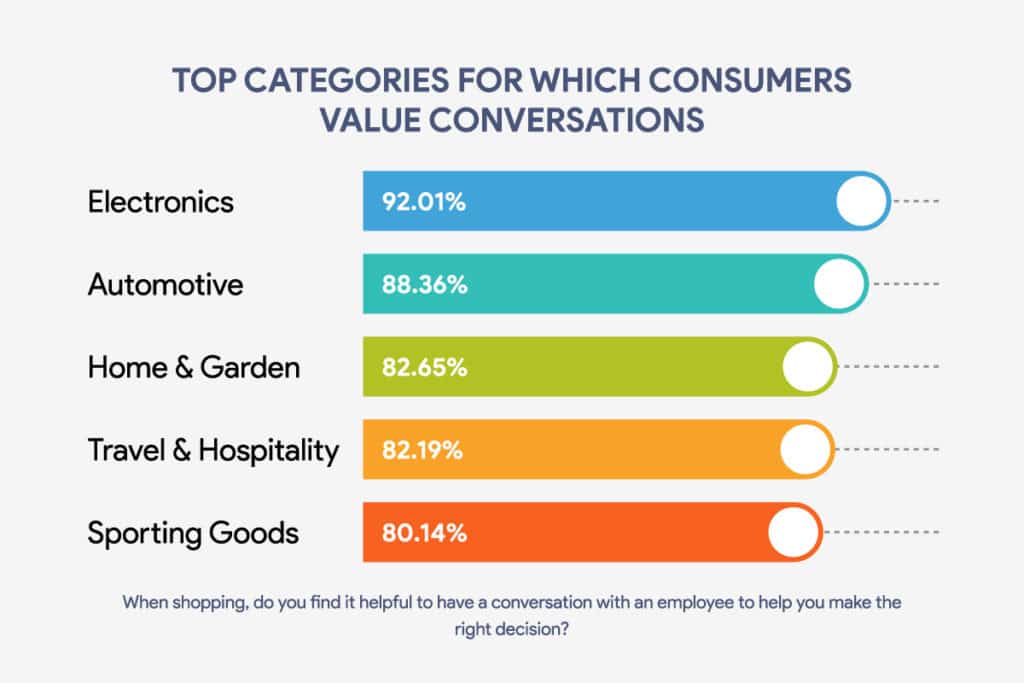
However, eCommerce is growing. And increasingly, consumers want to engage with brands digitally. The same survey we mentioned earlier found that over 70% of consumers already have or are willing to interact with a company via text, SMS, web chat, or Facebook Messenger.
Many brands understand the importance of connecting with consumers via their preferred channels. As such, they’re adding tools and resources to facilitate conversations across these channels.
And now, some key conversational commerce channels are releasing new advertising options that’ll allow you to engage even more prospects in conversion-boosting conversations.
Conversational Commerce: Going Beyond Problem Resolution
When we think about consumers and brands engaging in conversations online, our minds might first go to problem resolution. A customer receives a broken item in the mail, and reaches out via live chat to get a replacement. A traveler is unhappy with her flight experience and connects with an airline via Facebook Messenger.
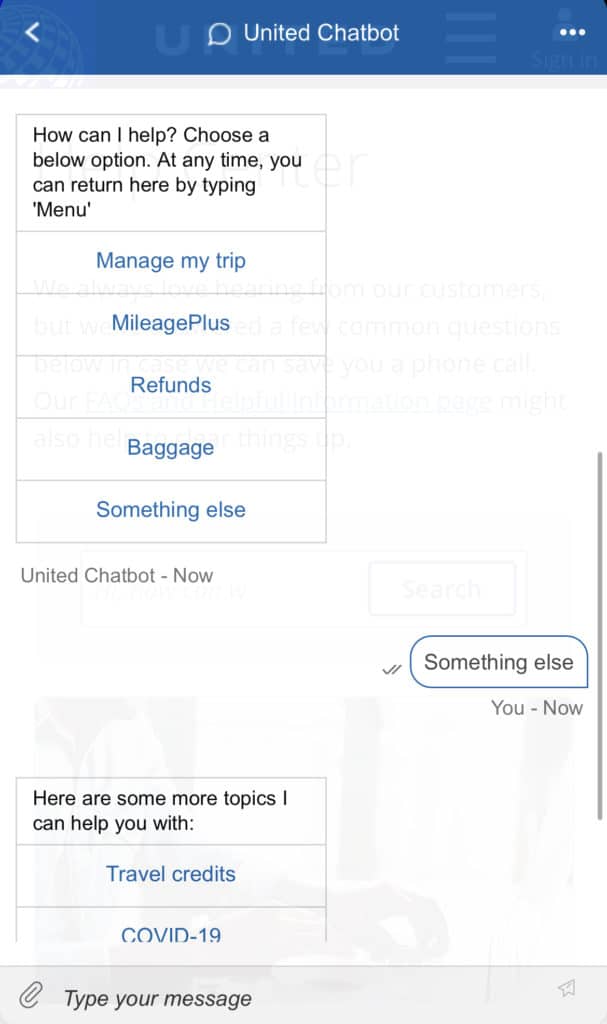
Post-purchase support is certainly an important use case for conversational channels. Our survey found that nearly 69% of consumers indicate that getting support about an order is a reason they’d message or chat with a brand.
However, conversational commerce goes beyond post-sale support. Rather, it’s all about engaging in conversations at the customer’s moment of need, moving them through the funnel, and ultimately, making a sale. It could be the customer’s first purchase.
For example, a shopper might engage with a company via Google’s Business Messages to get recommendations for a pair of shoes – and ultimately, purchase them. Or, it could be an upsell or cross-sell with an existing customer. For example, a consumer might reach out to their existing insurance company with a question about their policy – and end up purchasing a supplemental policy, too.
Conversational commerce is a powerful tool across industries. Here are just a few examples:
- Retail: A consumer can inquire about product availability and reserve that product for pickup.
- Travel and hospitality: A consumer can ask questions and book a reservation right within the conversation.
- Automotive: A consumer can inquire about inventory availability and schedule an appointment for a test drive.
- Communications: A consumer can explore phone plans and sign up within the conversation.
- Financial Services: A consumer can compare credit cards or banking products and open an account.
- Healthcare: A consumer can get help finding a provider that accepts their insurance and offers the services they’re looking for.
The brands that are more successful with conversational commerce typically employ a blend of automation and human interaction. For example, they leverage digital assistants to help customers with common questions and simple requests. For more complex matters, the consumer is seamlessly handed off to a live agent.
In addition, the most customer-centric brands leverage SMS – as well as what’s referred to as over-the-top (OOT) channels. Essentially, OOT is communication on a platform that uses the internet for transmission. Some examples include Facebook Messenger and WhatsApp.
While there are many trends that come and go, conversational commerce is here to stay. And it’s one that brands can’t afford to ignore. There are three key reasons why.
1. Conversational Commerce Empowers Brands to Meet Shopper Expectations
While great products and services are important, modern consumers also demand great experiences. According to Salesforce research, 88% of consumers say that the experience a company provides is as important as its product or services.
If their expectations aren’t met, they’re likely to move on. That same report found that 71% of consumers have switched brands at least once in the past year.
These days, consumers have high expectations. They want to interact with brands whenever and wherever the need arises. And they aren’t willing to wait around. In fact, over eight in 10 consumers expect immediate interaction when they contact a company. What’s more, as we already discussed, consumers increasingly want to interact with brands via digital channels.
Conversational commerce helps you meet those lofty expectations.
2. Conversational Commerce Helps Brands Grow Sales
Online conversations have the potential to create connections, build trust, and drive sales. In fact, we’re going to start seeing a lot of growth in conversational commerce. Juniper Research predicts global spending on conversational commerce channels will explode to $290 billion dollars.
If you’re not tapping into conversational commerce, you’re leaving money on the table.
3. Conversational Commerce Allows Brands to Thrive in a Cookieless World
We’re moving toward a cookieless world. Yet, consumers’ demand for personalized experiences and offers isn’t waning. Per Accenture, more than nine in 10 consumers are more likely to purchase from a brand that recognizes and remembers them – and provides offers and recommendations that are relevant.
Brands must make it a priority to collect more first party data. And the good news is, our friends at Yotpo found that most consumers are willing to share that data – as long as there’s something in it for them.
Conversational commerce channels are great for collecting more of this first-party data. After a positive interaction, a shopper can be asked to provide information that can fuel more personalized offers and experiences.
Expanding Your Reach with Conversational Commerce Ads
Clearly, online conversations are a powerful way to grow sales. And some technology platforms have released (or have plans to release) advertising options that allow you to engage even more online shoppers in conversation.
There are a few key reasons these conversational commerce ads are appealing to brands:
- They’re a relatively inexpensive way to interact with consumers that feels a bit more personal.
- It gives first party data in a way that’s safe and protected.
- It creates a direct business-to-consumer connection.
Let’s take a closer look at some specific conversational commerce advertising tools that can help you engage more shoppers in conversations – as well as some that are coming soon.
1. Google Conversational Commerce Ads
These days, a large portion of online experiences start with a search engine. And 92% of those start on Google.
With Google Conversational Commerce Ads, you can entice those consumers who are starting the purchase journey on Google to interact with your brand.
How does it work? Let’s say a consumer is starting to research running shoes. They navigate to Google and type in a search query for “running shoes.” At the top of the results page is an advertisement for a running shoe brand – with a call-to-action to chat with them. The shopper clicks the link, which initiates a Google Business Message. They’re able to ask questions, find a pair of shoes that meet their needs, and pay for the shoes – which they’ll pick up in-person later that day.
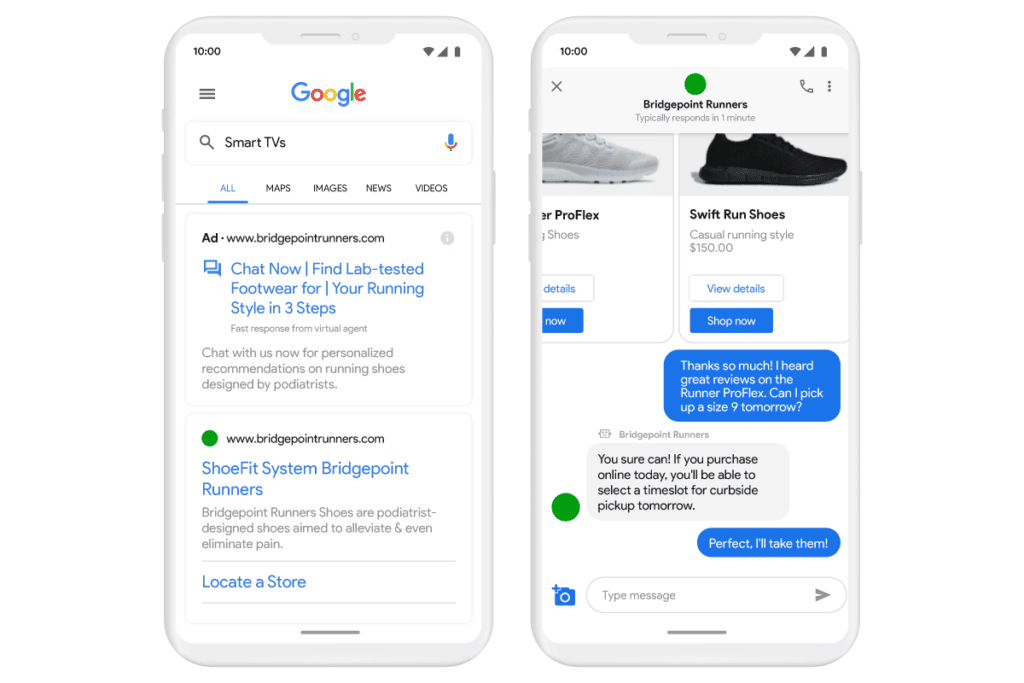
Regardless of whether the consumer makes a purchase immediately, the conversation is added to their Salesforce record. This adds another layer of data, which can provide context for future interactions with this particular shopper.
2. Meta Click to Message Ads
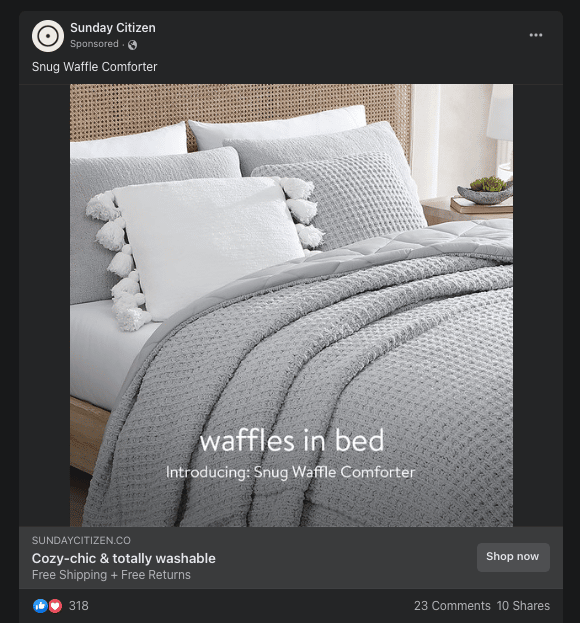
Recently, Mark Zuckerberg noted that “paid messaging is going to be ‘a big opportunity’” for Meta moving forward. It’s also a big opportunity for brands looking to engage with consumers where they already are, as social media sites and apps are some of the top destinations on the internet.
Traditionally, Instagram and Facebook ads directed consumers to a website or landing page where they could learn more about a product or service.
But now, Click-to-Message ads are also available. These ads allow businesses to run ads on Facebook and Instagram that – upon click – start a thread on Facebook Messenger, WhatsApp, or Instagram Direct.
Then, the brand can interact with the consumer via either automation, human interaction, or a mix of both.
Meta also has plans to release new targeting tools which will allow brands to target likely buyers via a message thread.
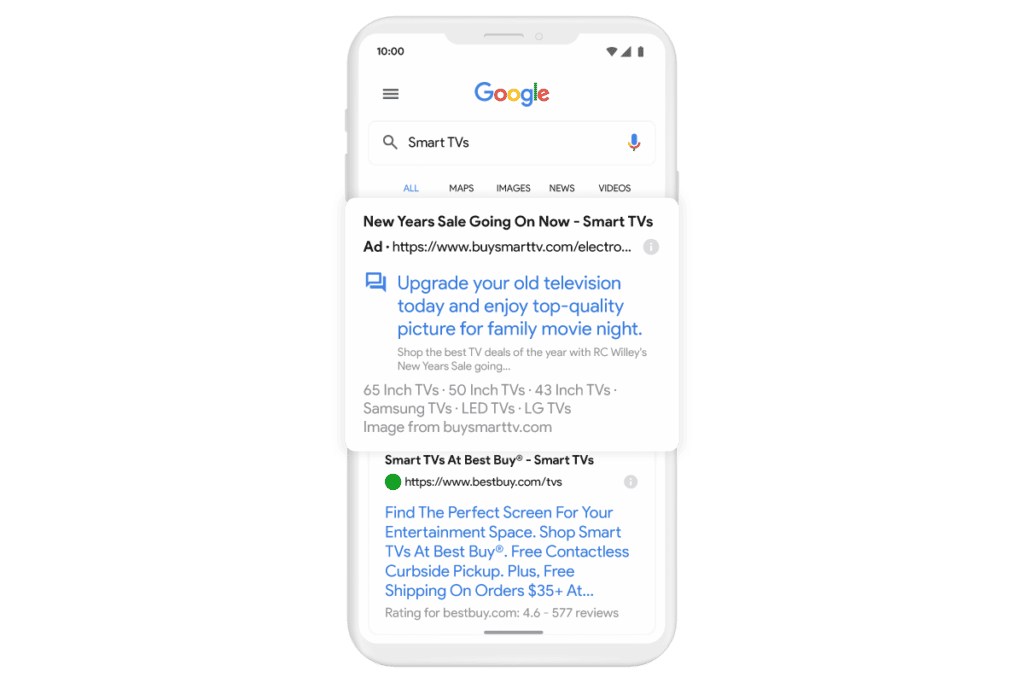
There’s More in Store
Google and Meta have plans to add to and enhance their conversational commerce ads. In addition, other platforms – including Amazon – are likely to follow suit by releasing advertising options that allow brands to bring more consumers into a conversation. Stay tuned: we’ll be sure to share news about new and updated offerings as soon as they’re available.
Explore Conversational Commerce Ads
Conversational commerce is a powerful (and proven) way to engage with customers – and grow sales. With conversational commerce ads, you can start engaging even more prospective customers in conversation.
Consider giving conversational commerce ads a try. Start small, measure your performance against other advertising methods in your toolbox, and optimize from there.
Explore how to manage all of your omnichannel messaging channels (including ads) in one place with Messaging Studio. Sign up for a demo today.